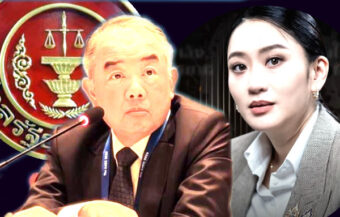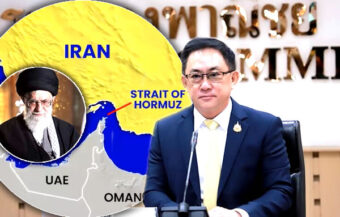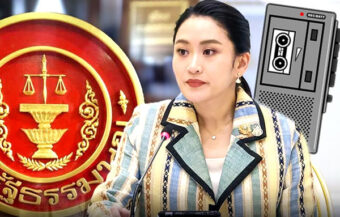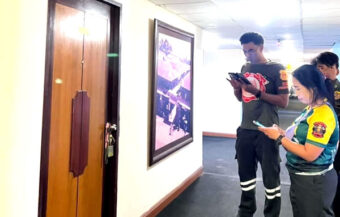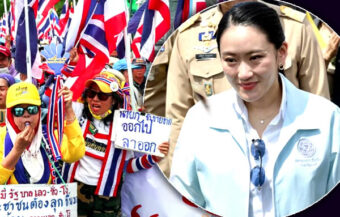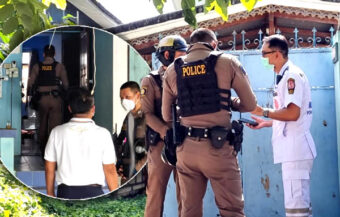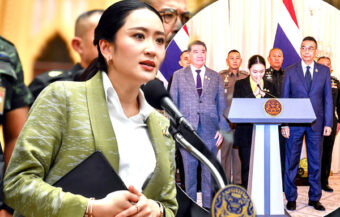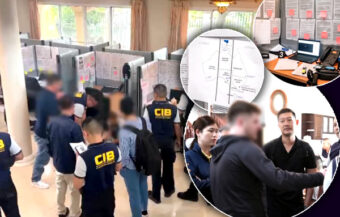The Eastern Economic Corridor (EEC) is a project conceived and launched by a law pushed by the junta government from 2016 to 2018. It is part of the wider Thailand 4.0 vision to develop Thailand into an added value, high tech and high-income country over the next fifteen to twenty years. This week, Prime Minister Prayut Chan ocha chaired a review by the agency tasked with oversight of the project as the government is expected to persevere with infrastructural investments and tax incentives for the scheme which is supported by both the World Bank and the International Monetary Fund (IMF).
The man directing Thailand’s flagship Eastern Economic Corridor (EEC) investment initiative did not pull punches this week as he referred to the economic challenges facing the kingdom and the setbacks suffered by the three provinces at the centre of the initiative which, over the last few years, have seen a significant GDP reversal with over ฿170 billion in lost GDP for the area despite the government’s perseverance to bring the project to fruition as part of Thailand’s strategy to become a developed and high income economy by 2036 and wean itself off foreign tourism.

‘The EEC will be a core investment destination in Thailand over the next five years and is expected to help enable the country to escape the middle-income trap by 2029,’ declared Mr Kanit Sangsuphan, the Secretary-general of the Eastern Economic Corridor (EEC) project this week after a review was completed under the chairmanship of Prime Minister Prayut Chan ocha.
He said he expected by then that the project hub will have matured and become an anchor point for a new more advanced economy in Thailand.
Still recovering from a massive 7.8% contraction in 2020 following the Covid 19 shutdown that year
Figures released by the Eastern Economic Corridor office show that the three provinces combined achieved a 2% GDP growth in 2021.
However, the three provinces experienced a savage 7.8% GDP contraction in 2020 with only a marginal gain of 0.2% in 2019 when the national economy grew by 2.4%.
The figures show that the three provinces have, in fact, underperformed the rest of the country in terms of GDP growth over the past three years.
Approved investment for projects in the Eastern Economic Corridor according to Mr Kanit amounted to no less than ฿1.7 trillion from 2018 to 2021.
Mr Kanit said that 80% of this was to come from the private sector with 20% coming from public sector investment.
Much of the investment is coming from Thai based individuals and firms to develop the economy
This week, in an overview of progress on the project, he referred to the ongoing development of U-Tapao Airport in Rayong and Laem Chabang Port as key aspects of development that will be boosted in 2022.
He said that of the approved investment of ฿1.7 billion, ฿924.73 billion would be spent on industrial development while ฿82 billion was to be spent on infrastructure and communications. A further ฿655 billion would be spent on key infrastructural projects allied to the scheme.
He pointed out that ฿654.821 billion was being put up by Thai based firms and individuals involved in developing the national economy.
The meeting heard that in the next four years, this level of approved investment is likely to increase to ฿2.2 trillion.
Economic setbacks for Thailand since the US-China trade war opened up in 2019 despite reports of some firms seeking bases outside China within the EEC
He laid emphasis, this week, on the economic setbacks that Thailand has suffered since the US-China trade war commenced in 2019 and subsequently during the COVID-19 crisis.
Some professional and advisory firms promoting the Eastern Economic Corridor (EEC) project in Bangkok are reporting interest from foreign firms seeking to relocate out of China because of the new trade environment.
At the same time, the Thai government is also positioning the three province development area as being in strategic partnership with China’s huge GBA or the Guangdong-Hong Kong-Macau Greater Bay Area which consists of nine Chinese cities and two special zones earmarked for priority development by Beijing.
The activation on January 1st 2022 of the Regional Comprehensive Economic Partnership (RCEP), the largest free trade pact in the world between China, ASEAN and other Asia Pacific countries, has been heralded by China as a step forward for its plans for economic expansion in Southeast Asia and deeper integration within the region.
It is also being seen as one of importance for the Thai government’s flagship project.
Top EEC official in a frank assessment of the economy pointed to only a slight rise in employment after a short-lived tourism reopening late last year
The top official at the Eastern Economic Corridor, this week, was brutally honest in his assessment of the economic situation at this time in the kingdom and the urgent need for economic progress.
Mr Kanit highlighted that household debt in Thailand has now risen to over 100% of GDP while observing that employment due to the reopening of the country which was again suspended for approvals at the end of December and will see the last foreign tourists, cleared for easy entry, arrive on January 15th next, had only brought a marginal rise in employment among Thai households.
EEC has lost ฿170 billion in GDP
He told his audience that up to 2021, the Eastern Economic Corridor had itself lost ฿170 billion in GDP with the lowest point for the three provinces being reached in the third quarter of the year.
He estimated that the ongoing COVID-19 crisis has seen ฿1.9 trillion in lost GDP to the Thai economy overall.
The emphasis this week on the project came after a meeting of the Eastern Special Development Zone Policy Office chaired by Prime Minister Prayut Chan ocha to review the activities and progress of the country’s flagship investment project.
Established by law in 2018 as a high tech hub
The Eastern Economic Corridor was established by a law passed in May 2018.
It is operated by the Eastern Special Development Zone Policy Office established by a law passed by the National Legislative Assembly of Thailand, a unicameral rubber-stamp parliament and branch of government from 2014 to 2019, the period when Thailand was ruled by the National Council for Peace and Order (NCPO) or the military junta.
The investment project centres on the development of the three key eastern seaboard provinces of Chonburi, Rayong and Chachoengsao as a hub for the high tech industry and added value exports.
It is itself at the heart of Thailand 4.0, another ambitious junta government plan aimed at transforming Thailand’s economic fortunes and leading it firmly on the path to becoming a developed and wealthy country.
Thailand encouraged by the World Bank in 2018 to wean its economy off intensive, mass-market foreign tourism due to environmental concerns
Developed by the economic team led by former Deputy Prime Minister Somkid Jatusripitak and the former Minister of Science and Technology, Suvit Maesincee, between 2016 and 2018, Thailand 4.0 has been linked to the Eastern Economic Corridor initiative which was put on a legislative footing in 2018.
Foreigners in Thailand should find out more about Thailand 4.0 and be part of the change that is coming
The EEC initiative launched by the junta government and taken on by the democratically elected government after the General Election in 2019 returned the same PM and economic team, was seen as part of an overarching plan to wean the kingdom off the foreign tourism industry, a move advised by leading world financial agencies at the time such as the World Bank.
The World Bank, for instance, in 2018 warned of the environmental damage being caused by excess foreign tourism and the lack of sustainability for such growth while the International Monetary Fund (IMF) saw Thailand as one of several countries well placed to beat the feared middle-income trap between being an undeveloped agrarian economy and a wealthy, developed one.
Prime Minister Prayut promised a high income, developed economy while visiting the UN in 2018
In September 2018, while on a visit to New York, Prime Minister Prayut Chan ocha told the United Nations that Thailand would become a high income, developed economy by 2036.
Prime Minister in New York predicts that Thailand will be a first-world economy in 17 years or by 2036
Since then these hopes have diminished substantially with the World Bank warning last year that the kingdom will need to achieve a consistently far higher level of GDP growth in the coming years to meet the aspiration while also competing with other tiger economies quite noticeably Vietnam in Southeast Asia which has succeeded in forging closer trade ties with the European Union and the United Kingdom while achieving a far higher rate of growth.
Vietnam has been outmanoeuvring Thailand
Although a smaller economy, Vietnam has a higher and younger population.
It is attracting more foreign direct investment with an estimated $17 billion flowing in in 2020 compared to approximately $10.85 billion for Thailand for the whole of that year.
Thailand’s disastrous record in terms of economic performance from 2019 can be seen with GDP per capita dropping from $7,817 in 2019 to a projected $7,261 in 2021.
Early last year, the Finance Ministry in Bangkok made it clear that Thailand must set out to achieve annual GDP growth of 4% for the next 7 years to have any prospect of reaching its stated goal of beating the middle-income trap and rising to become a developed economy.
For 2021, this is projected by the Bank of Thailand to be 0.9%.
At the end of last year, the Bank of Thailand projected 3.4% growth for 2022 based on no further economic disruption to the economy caused by the Omicron virus wave.
This is looking increasingly unlikely.
Seen as a centre of excellence for ‘S Curve’ industry which Thailand needs to transform its economy
The Eastern Economic Corridor aims to attract industry linked to advanced technology or what the government terms S Curve industry to Thailand linked with the industrial development of the three key provinces including the development of deepwater shipping facilities, high-speed rail links, advanced roads and other infrastructure to host and attract such firms operating in advanced automotive, medical technology, digital, artificial intelligence, robotics, advanced food production, electronics, aerospace, petrochemical and bioenergy sectors.
While there is money being pumped by the government into infrastructure in the region and various projects have received the green light, not least private sector investment from industry, progress has been lacklustre despite very generous terms on offer from Thailand’s Board of Investment including tax relief, land and other government supports.
Foreign investment in Thailand has been falling off in recent years despite the Eastern Economic Corridor (EEC) project being marketed extensively
Earlier, in March 2021, Mr Kanit, the Secretary-general of the Eastern Economic Corridor said that he expected inward investment into the project to pick up after being postponed up to that point due to the pandemic.
‘Private investment is expected to become more active this year after being delayed from last year due to the pandemic,’ he said.
Finance Minister says economy must pivot away from tourism with a switch to S-Curve industries
He predicted $13 billion or ฿435.5 billion to be invested in 2021, 75% of which he said would come from business concerns with the balance coming from infrastructure expenditure by the government.
Apart from individual investments announced in the last three months including a $900 million or ฿29.88 billion investment by US car firm Ford in the automotive sector which already employs 10% of Thailand’s manufacturing workforce, the kingdom has seen a sparsity of good news on the investment front.
Economic plan to put the smile back in Thailand’s appeal to western foreigners to live and work
A cautious recovery in 2022 says Bank of Thailand boss but PM strikes a mildy more optimistic note
In mid-April 2021, former JP Morgan boss, Chayotid Kridakon, advising the government on its plan to attract up to 1 million foreigners to relocate to Thailand and invest in the kingdom, revealed that in the previous five years, foreign direct investment in the kingdom had plunged by 50% with only ฿360 billion being committed in 2020 with Japan emerging as the country’s largest investor nation followed by China.
Project finds itself at the centre of growing US Chinese rivalry with rising US fears that it may become a hub for future Chinese economic expansion in the region
The project has also become a focus of the increasingly strained relationship between the United States and China in the region with US concerns about plans to link the development to Chinese expansion initiatives which Washington has grown increasingly wary and suspicious of.
In October 2020, US Ambassador Michael de Sombre, while pointing to investment plans by US firms for the Eastern Economic Corridor, questioned the competitiveness of the terms on offer from the Thai government.
American firms invested in the EEC but De Sombre questioned the competitiveness of incentives offered
De Sombre also questioned the bureaucratic nature of the investment approval process operated by the Board of Investment.
He also raised concerns about the involvement of Chinese tech firm Huawei in providing digital infrastructure support to the flagship project and alluded to US intelligence warnings that this technology could be compromised.
Airport rail links are a key facet of the plan
Mr Kanit referred, this week, to plans to develop the high-speed rail links from Suvarnabhumi Airport to Don Muang and onto U-Tapao Airport which is a centrepiece of the Eastern Economic Corridor project.
This is currently in the hands of a consortium that will be seeking bank facilities for going ahead with the main part of the project later this year.
He saw this development coming on stream over the next four years with a completion date target for the end of 2026.
He underlined his agency’s and the government’s commitment to the rail link between the three international airports which is expected to move forward in 2022.
In October, Mr Kanit insisted that the high-speed train link to link the three main airports would be complete in four years or by 2026.
2022 is a significant year for the construction of the high-speed rail link from Bangkok with bank funding for the scheme expected to be secured by November
He noted that the State Railway of Thailand (SRT) had handed over 98.11% of the land required to the consortium awarded the contract.
This is Asia ERA 1 or Eastern High-Speed Rail, a consortium including Chinese interests as well as Bangkok Expressway and Metro PLC (BEM), Italian-Thai Development PLC, China Railway Construction Corporation Limited (CRCC). It is led by the Charoen Pokphand Group.
The remaining land is to be delivered to the group this year and the consortium is planning to raise up to ฿100 billion in funding by November 2022 to advance the project.
It is expected that the State Railway of Thailand will give instructions to proceed with the project in March 2022.
Delayed payment by the consortium of ฿10.7 billion after it took over the rail link from Suvarnabhumi Airport into Bangkok, badly hit by COVID-19
The consortium had, last year, requested several waivers including the postponement of a ฿10.7 billion payment due.
This stemmed from the lockdown last year which severely constrained revenue from the Airport Rail Link service, a commuter line from Suvarnabhumi Airport to Phaya Thai station in Bangkok.
This is another deep insight into how the country’s huge foreign tourism and travel industry is an indirect revenue source for the wider Thai economy.
The consortium took over the line in October 2021 but agreed to a 10-year payment of the fee in instalments meaning the line remains in the ownership of the State Railway of Thailand for that period.
The EEC agency highlighted this week that the project has successfully supplied 14,467 skilled workers to the economy during the last three years as officials working with the project have liaised closely with educators and educational institutions to develop more focused and effective technical training.
Thailand’s high tech eastern corridor faces a shortage of skilled technology workers in the next five years
Fears were raised in recent years that the kingdom would have difficulty meeting demand from international firms seeking to relocate advanced facilities to the region prompting urgent measures to be taken.
Join the Thai News forum, follow Thai Examiner on Facebook here
Receive all our stories as they come out on Telegram here
Follow Thai Examiner here
Further reading:
Thailand’s economy awaits the fallout from the Omicron surge as projections for 2022 take a dive
Inflationary fears for Thailand more muted than in the United States but planners should prepare
A cautious recovery in 2022 says Bank of Thailand boss but PM strikes a mildy more optimistic note
With Omicron hovering, firms already suffering a cash flow crunch with the economy again in peril
Shaky economic recovery as planners target only a 1% gain in 2021 with rising headwinds in Quarter 4
Economy climbing out ‘of a hole’, foreign firm’s confidence levels rose sharply during October
Another GDP contraction looms as Thailand tries to boost its economic fortunes by spending more
Government borrows more to bring the economy through an extended Covid 19 crisis with GDP flat
Officials switch to prioritising economic recovery as CCSA expected to agree a new Covid approach
Rising prospect of GDP contraction for 2021 may see government breach the legal public debt limit
Economic fears rising as Thailand faces a bigger crisis than 1997 with rising job losses and debt
Baht falling with confidence in Thailand waning as foreign tourism closure and virus drive funds out
Central bank to lower GDP growth forecast as its attention turns to private sector debt management
Loan bill passes but Thai economic prospects are not bright with a 1.8% 2021 GDP gain predicted
IMF urges government to loosen nation’s purse strings as finances tighten with the tax take down
Failure to pass the ฿500 billion borrowing decree could lead to the dissolution of parliament
Industry leaders and central bank all warn that foreign tourism must return to avoid a collapse
Fact – only 6,556 visitors arrived in Thailand last month compared to 3.95 million in December 2019
Desperate foreign tourism business concerns are clinging to straws as they try to survive the crisis
Challenge of the virus and closure to tourism leads to major long term changes in the Thai economy
Finance Minister says economy must pivot away from tourism with a switch to S-Curve industries
Strengthening baht predicted as investors bet on a reopening of Thailand to mass tourism in 2021
Thailand facing a credit crunch as 3rd virus wave craters the kingdom’s economic recovery plans
3rd virus wave now spells not just economic loss but financial danger as kingdom’s debt level rises
Still time to avoid lockdown says Health Minister as 3rd virus wave dwarfs all infections to date
Thai economy is still in reverse despite rising confidence and a virus threatening a 3rd wave
Reopening of Phuket still not officially approved although it is the ideal test for a broader move
Minister urged not to be afraid to borrow in 2021 as fears grow for a quick foreign tourism revival
Economy to rebound as the year progresses driven by exports and a return of mass foreign tourism
Door closing on quick foreign tourism return as economic recovery is delayed to the end of 2022
Fact – only 6,556 visitors arrived in Thailand last month compared to 3.95 million in December 2019
Desperate foreign tourism business concerns are clinging to straws as they try to survive the crisis
Finance Minister says economy must pivot away from tourism with a switch to S-Curve industries




